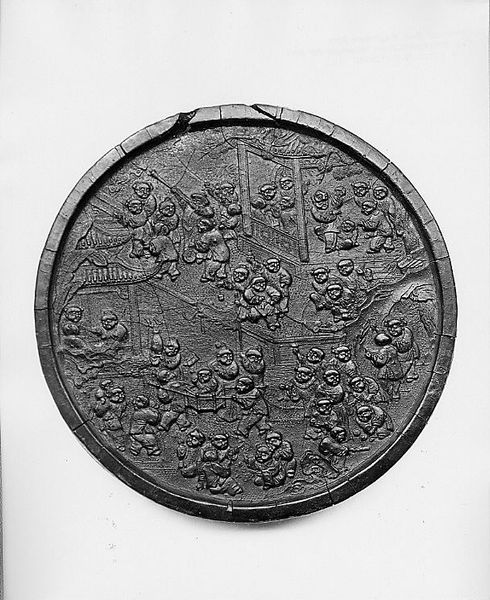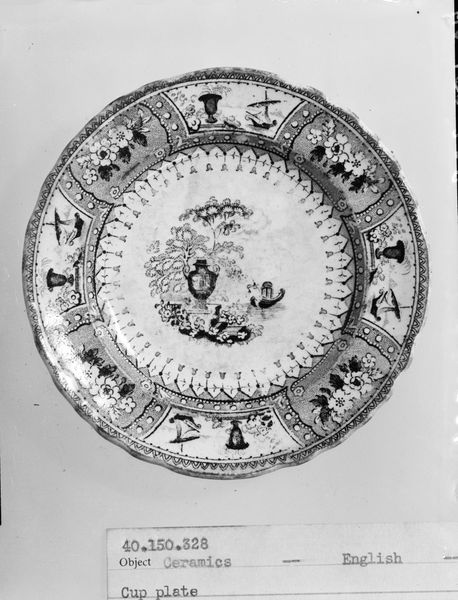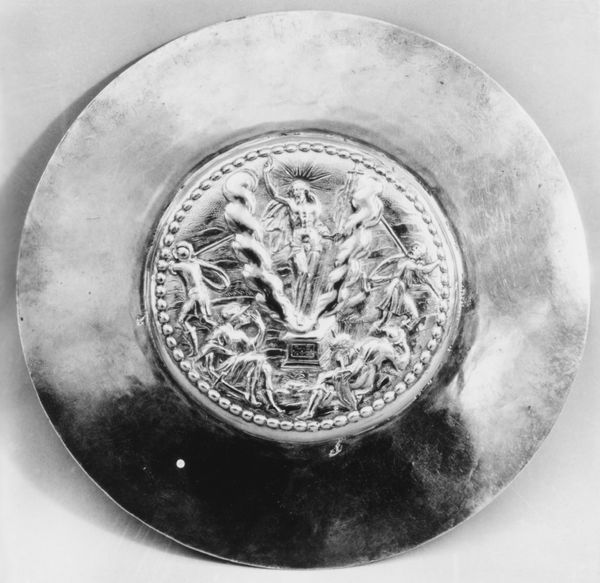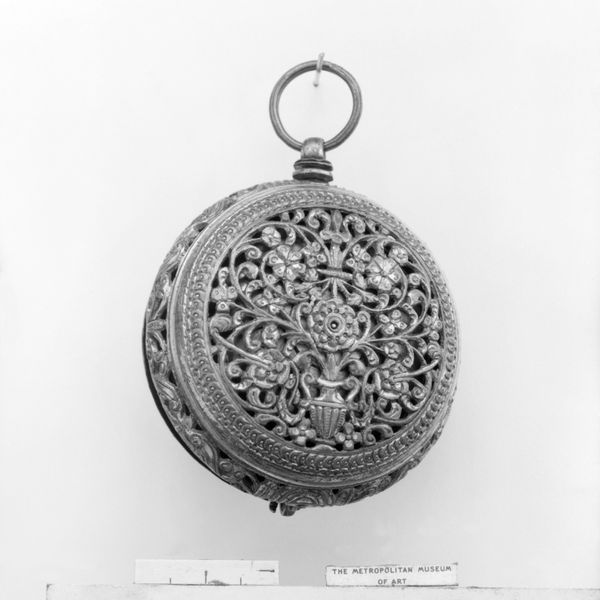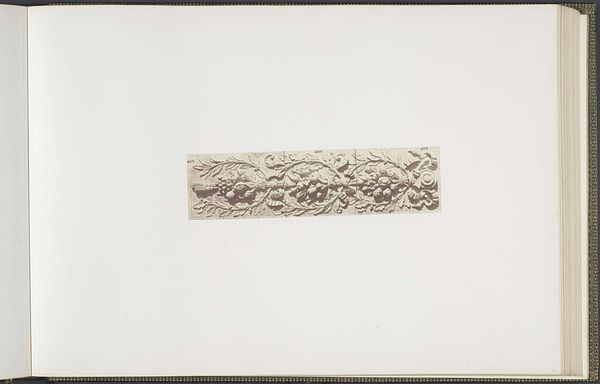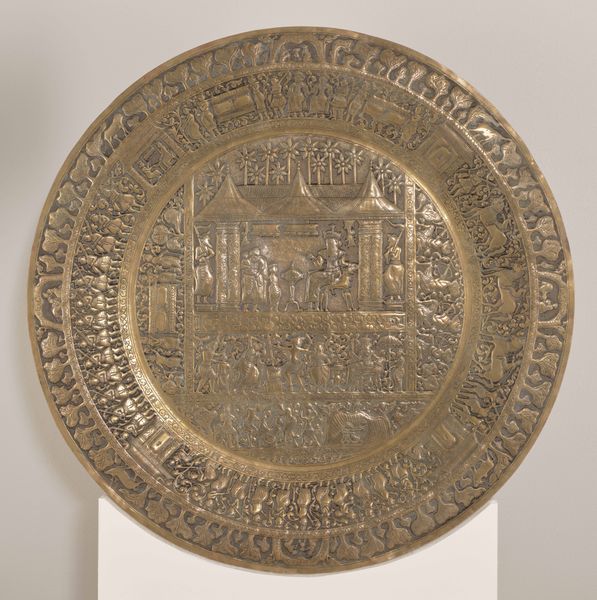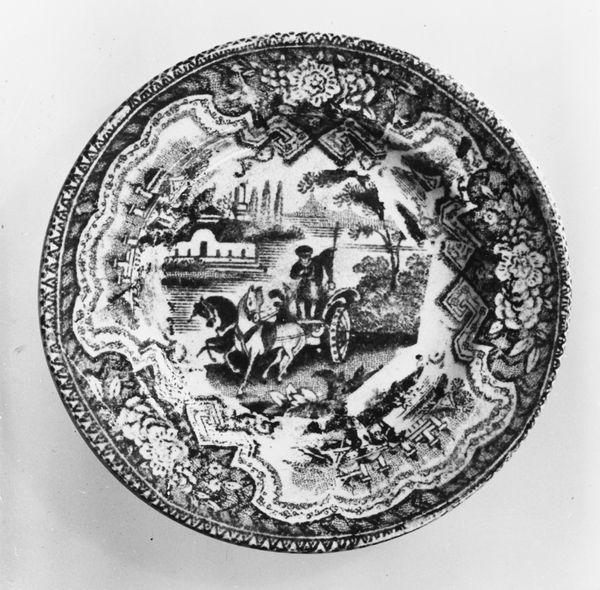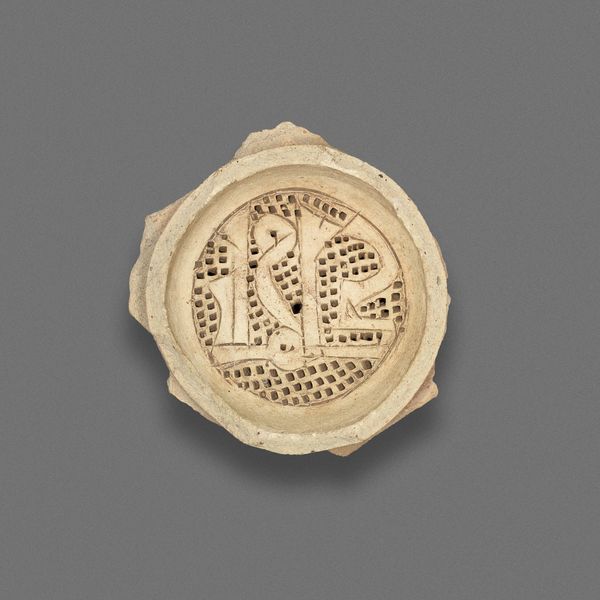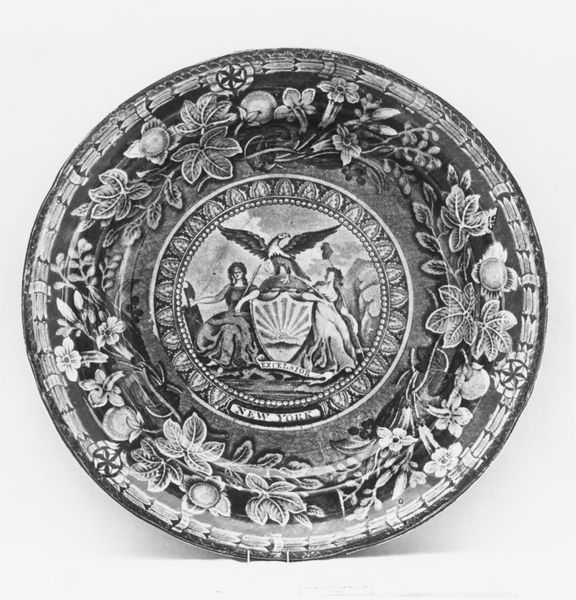
glass
#
glass
#
stoneware
#
united-states
#
texture
#
decorative-art
Dimensions: Diam. 5 3/4 in. (14.6 cm)
Copyright: Public Domain
Curator: Ah, here's an exquisite example of early American glasswork. This plate, crafted by the New England Glass Company between 1832 and 1835, is currently housed in the Metropolitan Museum of Art. Editor: It has an austere beauty, doesn't it? The crisp geometric pattern and the material clarity...it almost vibrates. One could lose hours observing light as it refracts from the glass. Curator: The precision of the cutting is quite remarkable for its time. Consider how the repeated motifs interact with one another; it presents a unified decorative vocabulary across the whole form. There's a radial balance anchored by the dense square grid at its center. Editor: I'm thinking about the social implications of an object like this. How would it have functioned in the context of an early 19th-century American household? It's undoubtedly decorative, so we can rule out utilitarian concerns beyond serving perhaps some fine pastries or candied fruits at tea parties, which implies certain degrees of financial comfort and social aspirations on the part of its owners. Curator: True. And technically, we could describe its function using semiotic terms. One might note that, like all "tableware", its main value resides not in physical qualities but, instead, as a medium which provides opportunities for performing complex sets of symbolic gestures. Editor: And the fact that it’s made of glass is interesting, as it reveals how new industrial processes allowed relatively wide sectors of the middle class to have access to products that could imitate those consumed in more affluent social circles... How these decorative plates were received by their intended public and what that public actually saw, perhaps there’s more to consider than just a transparent slab of glass. Curator: The use of glass undeniably brings a certain *je ne sais quoi* to this object, something fragile and ephemeral to the dining experience and to any associated domestic activities. Editor: Agreed, considering the labor practices that the glass factories engaged in, we can only say that it's fascinating, both in its artistic complexity and socioeconomic ramifications. Curator: A fascinating object indeed, giving us a perspective from which we may view both the artful rigor and sociopolitical intricacies present at the time.
Comments
No comments
Be the first to comment and join the conversation on the ultimate creative platform.

